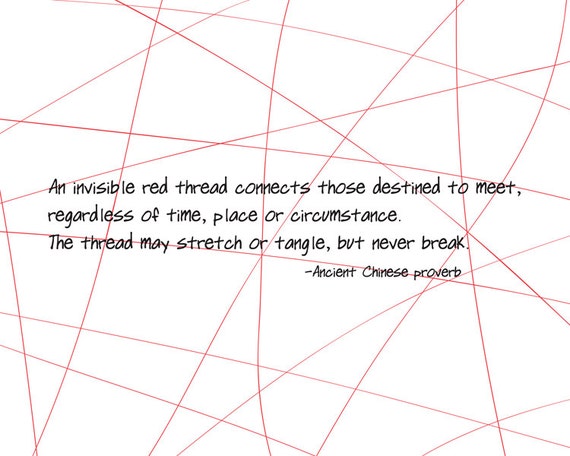 "An invisible red thread connects those destined to meet, regardless of time, place, or circumstances. The thread may stretch or tangle, but never break." -Ancient Chinese Proverb
"An invisible red thread connects those destined to meet, regardless of time, place, or circumstances. The thread may stretch or tangle, but never break." -Ancient Chinese ProverbEach time I move to a new place life starts as if on a blank slate, a fresh canvas. Some places there are relatives, distant cousins, who provide the vital crutch that is required in these situations. After all it is only family that will rally when circumstances are dire. In some cities like Tokyo one does not have that advantage; over there one relies on distant friends of friends! Some people don't need the feeling of belonging to a place or community, they are content in themselves; but I am not one of those. Having grown up constantly surrounded by family and having spent much of my childhood in residential colonies, I feel comfortable when I establish a network of friends that I can rely on.
In most places now I have noticed something very interesting.....the phenomenon of six degrees of separation, or in some cases 2 degrees. This came sharply into focus upon my move here to Maryland. It turned out that my neighbor here and I were living on the same street in Colaba in Mumbai; another newly made friend grew up in a building right behind mine in Worli and we could actually wave to each other last summer when we both were visiting and best of all, my Junior College bench-buddy lives 5 minutes away from me here! If that was not enough, I went to a dinner party and met complete strangers and within minutes found several close connections with many of them. A million different connections with people I didn't know existed! In Manila I experienced something similar even if on a smaller scale. In London and New York the experience was identical. It is just uncanny the way these links come up. Some might very well say that while it is true that there are a billion Indians, the opportunity space exists in only certain cities, certain schools and colleges. So essentially one is interacting with people who lead analogous lives to us and hence all the connections.
But I would rather believe in the Chinese proverb that an invisible red thread connects those destined to meet ............ I find something magical and mystical in the connections that I make in new cities, it makes me feel that the unfailing hand of my karma guides me to these destinations.

